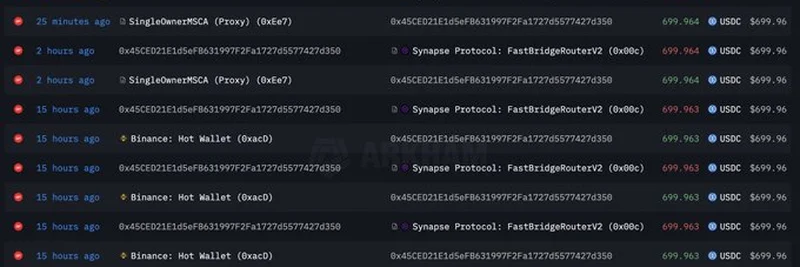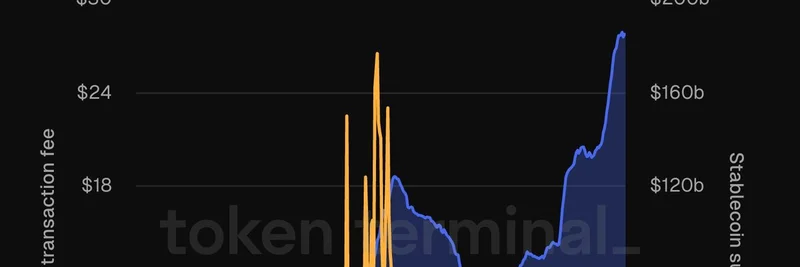If you’ve been keeping an eye on the crypto world, you might have noticed some unusual activity recently. Marty Party, a well-known figure in the cryptocurrency community, dropped a bombshell on X, pointing out some strange transactions involving Binance and a protocol called Synapse. According to Marty’s post on August 6, 2025, Binance has been moving $700,000 worth of USDC (a popular stablecoin pegged to the US dollar) back and forth between its Hot Wallet and Synapse Protocol’s FastBridgeRouterV2. The big question? Is this a clever way to fake trading volume?
What’s Going On With These Transactions?
Let’s break it down. The images Marty shared show a series of transfers starting about 20 hours before the post, with nearly identical amounts of USDC (around $699.96 each time) bouncing between Binance’s Hot Wallet and the Synapse Protocol address. This back-and-forth action looks suspicious to many, and Marty suggests it could be a tactic to inflate trading volume artificially. In the crypto world, higher trading volume can make a platform or token look more active and trustworthy, potentially attracting more users or investors.
For those unfamiliar, USDC is a stablecoin managed by Circle, designed to maintain a 1:1 value with the US dollar. It’s widely used for trading, payments, and holding value without the wild price swings of other cryptocurrencies like Bitcoin or Ethereum. Synapse Protocol, on the other hand, is a cross-chain bridge that helps move assets between different blockchain networks smoothly. The FastBridgeRouterV2 is a specific tool within Synapse that handles these transfers.
Why Does This Matter?
Marty’s claim hinges on the idea that these repetitive transfers might be a form of market manipulation. In traditional finance, manipulating markets is illegal, but in the decentralized and often unregulated crypto space, the rules are murkier. Tactics like “wash trading”—where someone trades with themselves to create fake volume—are a known concern. If Binance is indeed doing this, it could mislead traders about the real demand for USDC or the platform’s activity levels.
The community’s reaction on X has been a mix of shock and skepticism. Some users, like @ethsuperiority, asked if Marty has confronted Binance, while others, like @CryptoCrusader, outright accused the exchange of manipulation. There’s even a call for a boycott from @robdamercman89, showing how heated this topic has become. Marty himself clarified that while this isn’t illegal yet, it’s unethical, and he’s calling for better regulation from the SEC.
What Can We Learn From This?
This situation highlights a bigger issue in the crypto world: the lack of oversight. Unlike stock markets, where regulators like the SEC closely monitor activity, cryptocurrency exchanges often operate in a gray area. Marty’s post mentions the need for Market Structure regulation and ETF approvals to bring more transparency. For blockchain enthusiasts and meme token traders alike, understanding these dynamics is key to navigating the market safely.
If you’re into meme tokens or other crypto projects, keeping an eye on big players like Binance is crucial. Manipulation, whether proven or not, can affect prices and sentiment across the board. At Meme Insider, we’re all about helping you stay informed with the latest news and insights, so you can make smarter decisions in this wild blockchain landscape.
The Takeaway
Marty Party’s revelation has sparked a lively debate, and it’s a reminder to stay curious and cautious. The $700k USDC transfers might just be a glitch or a legitimate operation—only time and deeper investigation will tell. But for now, it’s a wake-up call to dig into the data yourself. Check out the transaction details Marty linked (https://t.co/HG6fI9niOo) and see what you think. What’s your take on this? Drop your thoughts in the comments—we’d love to hear from you!


